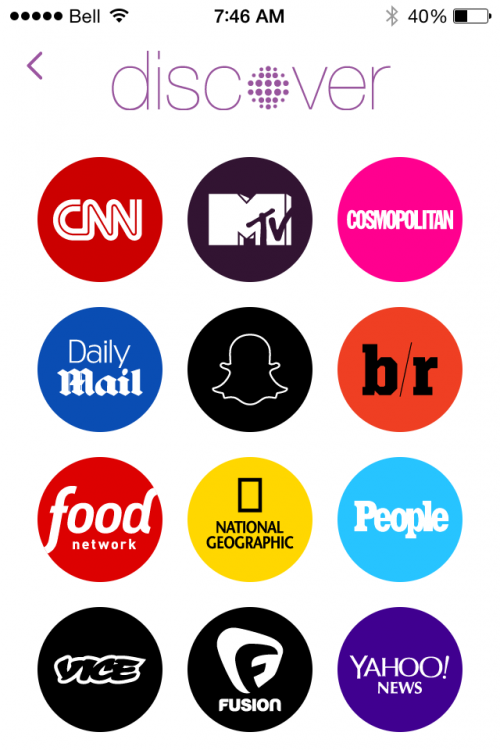News really is getting mobile
February 5, 2015
News organizations that have been focused on their online real estate — i.e. stuff they own, like their websites — need to start thinking more like train-hopping vagabonds.

This means going homeless and filling their rucksacks with original stories formatted for mobile-only apps, then hitting the road and stopping at a variety of destinations along the way that are boom towns now, but could very well be crossed with tumbleweed by next year.
Instead of worrying about permanence and stability — as in, “We’re dropping our bags in this oil/mining/car town, building a homestead and working until we can retire in comfort” — they must be willing and able to skip town at a moment’s notice. Creating story packages that travel well and adapt to the next place everyone is headed to is a must.
Right now, SnapChat is one of those places. For the last two years, people have been predicting that messaging and chat apps would be the next area of growth for online news. Now it’s finally happening in a big way.
Last week SnapChat introduced Discover, a go-to news source for mobile-formatted stories. So far, ten publishers are on board including Vice, Yahoo News, The Daily Mail, National Geographic, CNN, People, MTV, Cosmopolitan, b/r (Bleacher Report) and The Food Network. It remains to be seen if The New York Times and The Guardian will sign on. Stories are packaged in a variety of ways, including looping videos, 15-minute docs on hard news topics, silly animations and text-based articles. What’s more, advertisers are coming along for the ride. Here’s a screen shot from my phone of Discover’s home page.

To my surprise, there’s some fairly substantive reporting. Take this February 3rd story on Obama’s budget. It was a whopping 1073 words and because it sat on a native app, making it completely independent of the web and search, there was no link back to Yahoo’s home page. In fact, there was no direct tie between this Discover story and the stories on Yahoo’s main hub, only similar stories. Like all things SnapChat, the story disappeared 24 hours later and was replaced by a fresh news cycle.

The message is clear: the real story, the “complete” story on Obama’s budget, is where you are right now. We don’t take hostages and force them to back to our homepage.
In another example, a February 3rd CNN Supreme Court story called “Judgement Days,” a web throw at the end of the piece invited readers to visit CNN.com/Politics, but, again, because it sits on an app it was NOT a live link and so the chances of folks going to the homepage are slim. When I checked, the exact same story did not appear on CNN’s website. Other journalists have reported that stories prepared for Discover by The Daily Mail were cut-and-paste jobs from stories on their homepage page. So far, that hasn’t been my experience. News organization are adapting to the space and not pushing hard for their own way.
Takeaway No. 1:
SnapChat’s news delivery format has finally forced the detachment between print and digital. For much too long, digital has been sitting way too tightly next to print. They’re like siamese twins whose parents know they need to be separated because one of them will die eventually. But the parents keep putting off booking the operation because the surgery will be bloody and complicated and death to one or both will come very fast since they share organs. So the parents stall.
Takeaway No. 2:
By creating app-only stories that are formatted with the same design as updates from friends, which are just a few thumb swipes away, these first ten news organizations on Discover are finally acknowledging that they need to go where people are, not where they want them to be or arrogantly think they should be (i.e. their homepage) – h/t Joshua Benton. Millennials trust social media to keep up to date on what’s happening around the world and generally don’t give a second thought to the homepages of news organizations. In fact a recent poll conducted by SkyNews in the UK found that only 18% of 16-24 year olds turn to mainstream media for current events. The rest use social media.
Does this now mean that news organizations should shutter their homepages — like shuttering the family homestead — and only become app jumping vagabonds? Maybe. Time will tell. The homestead may just become one big storage locker whose visitors are a smaller band of rabid news and context geeks.
For now, I think Discover may prove to be the better way to get your news than the Facebook feed. The latter relies way too heavily on what the algorithms determine is news and a whole lot of accidental osmosis. And if it’s true that Facebook is dead to Millennials, then apps are the only immediate hope for news organizations for placement of their work. At least Discover isn’t aggregating like Facebook. It has editorial control, content ownership and ad placements so discrete I couldn’t even find them.
All aboard!

All of the hand-drawn illustrations in this post are by the Canadian-born artist, Jay Hambidge (1867-1924), and were commissioned by the now defunct, Century Illustrated Magazine (1881-1906). From my research, they appear to be in the public domain. If that is not the case, please let me know at alison(dot)garwoodjones(at)gmail(dot)com.



























Leave a Reply